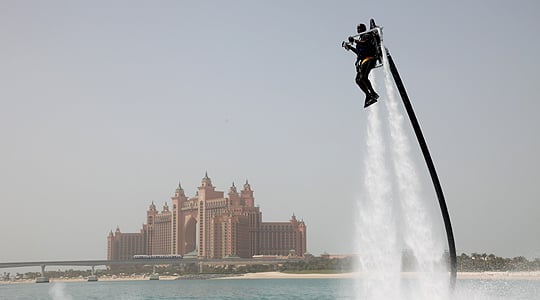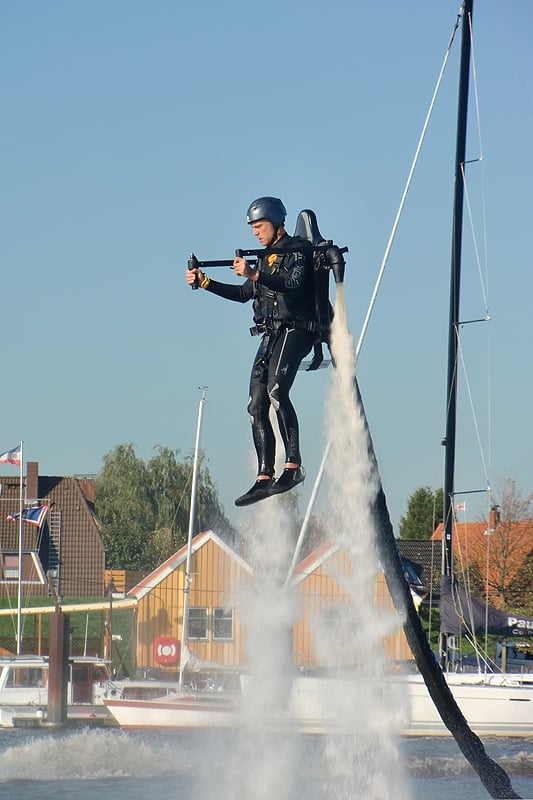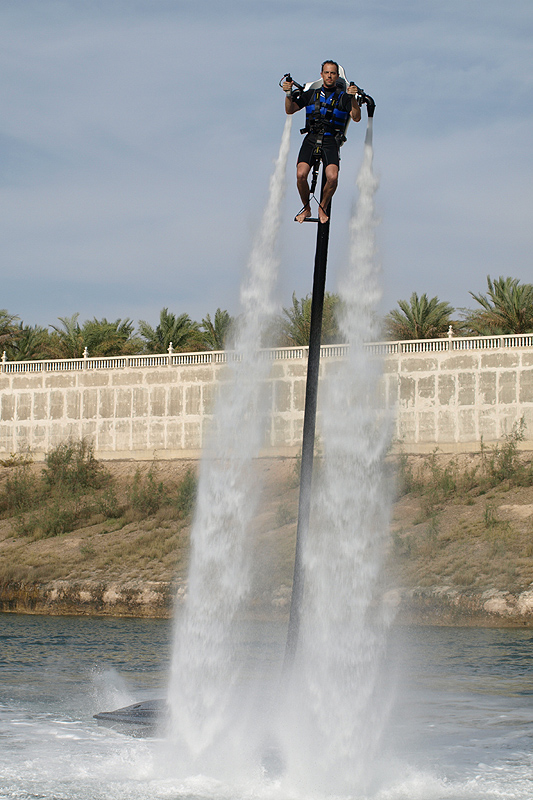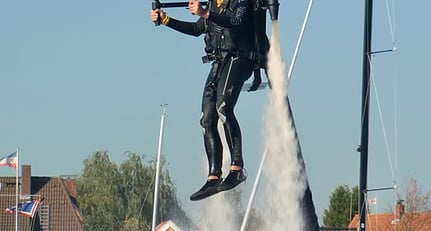
The notion of a ‘jet pack’ to enable human flight has been around for more than half a century, but most people still regard it as a sci-fi dream of the future. As long ago as 1960, Bell Aviation created a rocket belt powered by concentrated hydrogen peroxide (ideal for travelling hairdressers) and NASA deployed its ‘MMU’ (Manned Manoeuvring Suit) during three space shuttle missions in 1984.
But most efforts to produce a commercially viable rocket pack never really seemed to get off the ground – largely, one assumes, because of the likelihood that most people won’t get past the novice pilot stage before crashing painfully.
Sean Connery’s Bond, of course, took to the Bell rocket belt like a duck to water in the opening sequences of Thunderball, when an immaculately suited 007 had to flee some baddies – a brief flight saw him touch down safely behind the DB5, into the boot of which he carefully slotted the belt before making good his escape.
Now, however, some lateral thinkers (or should that be vertical thinkers?) have designed the JetLev Flyer, a jet pack for use over water – so when you crash land, it won’t hurt.


The first production versions of the German-built Jetlev were due to be delivered this month. For 129,000 euros, buyers will get a floating, carbonfibre pod containing a 250 horsepower propulsion engine that shoots a powerful water jet through a 30-foot hosepipe and into a 30lb pack strapped to the user’s back with a quick release harness. The water emerges at massive pressure from two articulated nozzles built into the pack, giving more than 500lb of thrust for movement and propulsion.
There’s enough power to fire a grown man 28 feet into the air and, unlike previous jet pack designs which invariably provided just a few seconds’ worth of flight, the JetLev Flyer will keep you airborne for up to three hours and can provide a 22mph cruise. Handles that form part of the backpack are fitted with controls for the throttle and nozzle direction to provide allegedly ‘effortless’ manoeuvrability.
New ‘flyers’ begin by learning basic manoeuvres, while advanced users (with 10 hours plus under their belt) can try advanced moves such as ‘the penthouse express’ (vertical acceleration to maximum height); the ‘brick wall’ (coming to an abrupt halt using reverse thrust) and the ‘sea otter’ (short surface travel lying on the pack’s back rest).
Learn more at www.jetlev-flyer.com.
Text: Simon de Burton
Photo: JetLev
ClassicInside - The Classic Driver Newsletter
Free Subscription!



